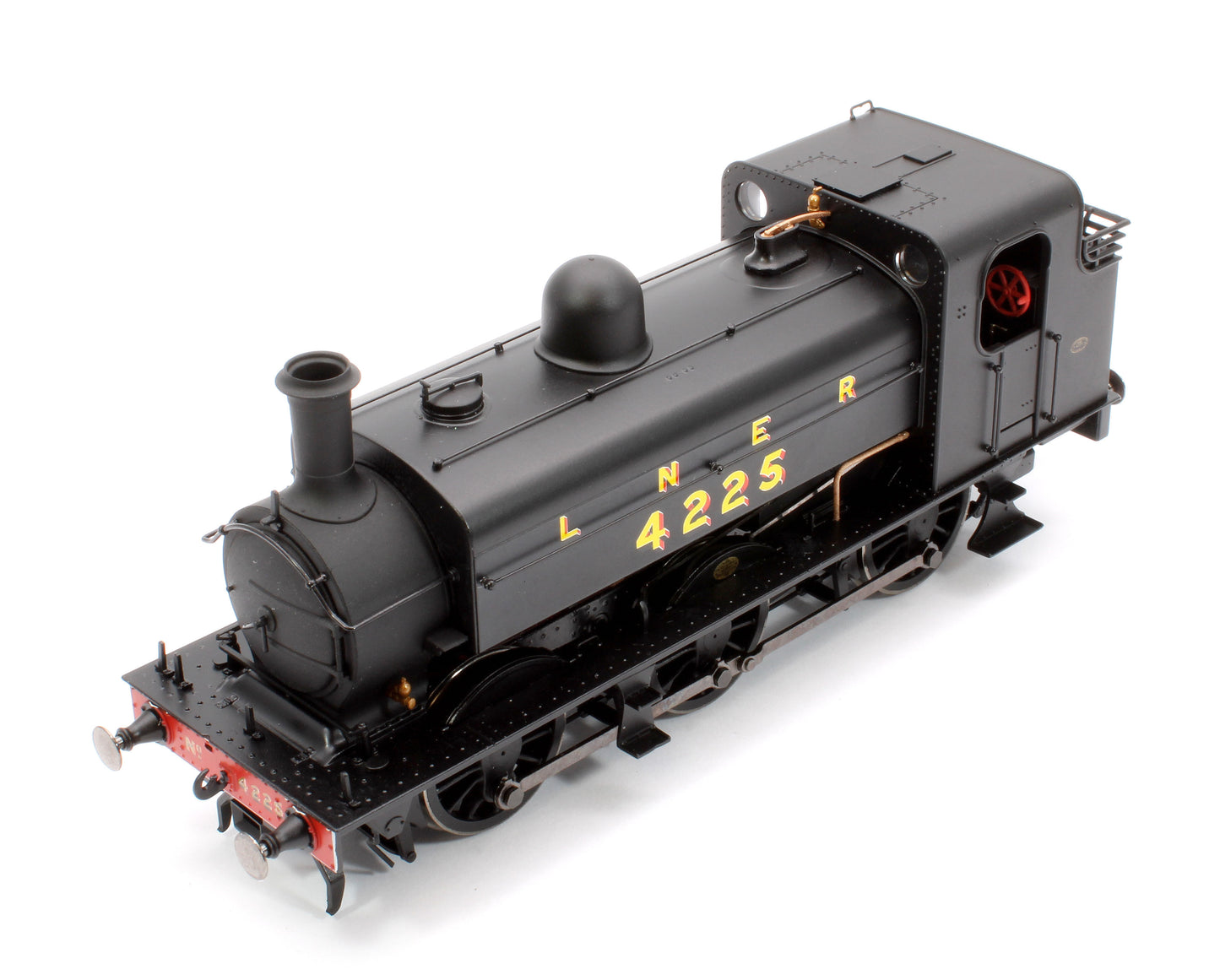Hornby R30366 Class J52 LNER 0-6-0ST 4225 Steam Locomotive










Product Details
| SKU | HOR-R30366 |
|---|---|
| Vendor | Hornby |
| Categories | Bargains Best selling products Era 3 Featured HO-OO Hornby Hornby November 2024 In stock Items Latest Releases Locomotives New products OO Gauge Bargains OO Gauge Latest Releases OO Gauge Locomotives OO Gauge scale OO Gauge Steam Locomotives Steam Locomotives |
| Scale | OO Gauge |
| Share | |
| Features |
|
Product Description
Product Info
This model represents one of just ten examples of the J52 (formerly GNR J13) built by Robert Stephenson & Co at its works in Newcastle-upon-Tyne. Originally numbered ‘1225’, after the grouping it was repainted and received the LNER number ‘4225’ in November 1926, which remained until the LNER’s renumbering scheme of 1946 when it became No. ‘8824’ and, subsequently, BR No. ‘68824’. The locomotive lasted in service until May 1959, a creditable 60 years in traffic.
Detail features:
- High detail OO gauge model based on extensive research and original works drawings. A brand new tooling of the J52 for 2025
- Classic LNER black livery
- Matt smokebox and cab roof finish
- Die-cast boiler, chassis and running plate
- Separately fitted metal handrails with brass stanchions, prototypical in size for 1:72 scale
- Double footstep arrangement
- Coal bunker with separately fitted coal rails and simulated coal load
- Separately fitted lamp brackets with the option to change lamp code using supplied lamps
- High detail cab with fully decorated backhead and decorated instrument dials
- Die-cast flush-faced connecting rods
- Opening cab roof vent
- 3’ 3” built-up chimney
- Separately fitted Ramsbottom safety valves
- LNER modified steam pipe arrangement
- GNR stepped buffer stocks with sprung metal buffers
Electrical & traction features
- 21-pin DCC socket, compatible with HM7000 21-pin sound decoder
- HM7070 stay alive compatible
- Decoder-controlled firebox flicker (decoder sold separately)
- Powerful 5-pole skew-wound motor
- Wiper pickups on all wheels for reliable electrical pickup
- Pogo pin wheel pickup arrangement for easy servicing of pickups
- Oilite main drive bearings
- Front and rear NEM coupling pockets, with the rear coupling pocket having a close coupling mechanism. Narrow tension lock couplings included
- Accessory bag contains vacuum pipes, lamps and couplings
- Weight: 235 grams









